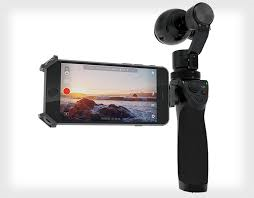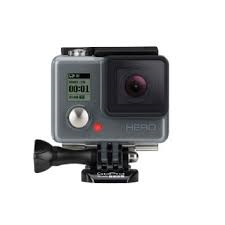How To Use DSLR Modes
- With most DSLR cameras, you will set the automatic modes through either the mode dial along the top panel of the camera or using the on-screen menu, accessible through the menu button on the back.
- Most DSLR cameras have a fully automatic mode, a fully manual control mode, and a few mixed modes, where some settings are determined by the camera automatically, while others are set manually by the photographer.
- These modes are a great way to ease yourself into the transition from a point-and-shoot camera to a DSLR, as you can learn about how to use the camera gradually.
- Manual mode- (digital single lens reflex (DSLR) is one of the main settings on your camera, and it lets you manually control shutter speed, aperture, and ISO etc..

Manual mode is explained using the three simple components; Aperture, Shutter speed and IOS (Basic information on key components. )
How to shoot in manual mode:
- Check the exposure of your shot with the light meter visible through your viewfinder.
- Pick an aperture.
- Adjust the shutter speed.
- Pick an ISO setting.
- If the light meter “ticker” is lined up with 0 you have a “properly” exposed picture.
- Take the Shot.
Why shoot in manual mode?
You want to have control over your depth of field because, for example, you’re shooting a landscape, or you want to freeze action, or you don’t want noise in your image.As you become a more advanced photographer, you will want to have control over your camera.
- Automatic cameras- digital single lens reflex (DSLR)

Most DSLR cameras have an “A” mode, however this is only a partially automatic mode. The “A” on the mode dial stands for “aperture priority automatic,” which means the photographer or the camera sets the aperture first, and the camera then automatically adjusts the other settings, based on the aperture setting.
The “S” setting is similar, allowing the photographer or the DSLR camera to set the shutter speed first, and the camera then adjusts the other settings, based on the shutter speed. The “S” mode is short for “shutter priority automatic.”
“Programmed auto,” usually marked with a “P” on the mode dial, is another partially automatic mode. The DSLR camera will select the best shutter speed and aperture setting, depending on the available lighting, and the photographer can control the other settings.
Scene Modes: With a scene mode, you select the type of scene you want to shoot, and the camera will create the camera settings automatically that most closely match that scene.
Why use Automatic Mode on a DSLR Camera?
- Most of these cameras do a great job in picking the settings for you and exposing the photo correctly.
- You’ll have good success shooting in fully automatic mode for those quick shots.
- A handheld device- A handheld can be any computing or electronic device that is compact and portable enough to be held and used in one or both hands.

A point-and-shoot camera- also known as compact camera, is a still camera designed primarily for simple operation. Most use focus free lenses or autofocus for focusing, automatic systems for setting the exposure options, and have flash units built in.
Compared to SLR Cameras
- Point-and-shoot cameras are distinguished from single-lens reflex cameras (SLRs) in several respects: point-and-shoot film cameras, and many digital ones, use a viewfinder.
- Point and shoot camera: The image that the photographer sees is not the same image that passes through the primary lens of the camera. Rather, the image in the viewfinder passes through a separate lens.
- SLRs: have only one lens, and a mirror diverts the image from the lens into the viewfinder; that mirror then retracts when the picture is taken so that the image can be recorded on the film or sensor.
- Large format Camera- Large format refers to any imaging format of 4×5 inches (102×127 mm) or larger.
The main advantage of large format, film or digital, is a higher resolution at the same pixel pitch, or the same resolution with larger pixels or grains.
Large format cameras were some of the earliest photographic devices.
- Plate cameras- ‘Plate’ refers to the sensitized photographic sheet used to take the image. Plate Cameras are really defined by the type of film they originally used rather than the actual attributes of the camera ‘s construction itself.
- Medium Format Camera’s– the term applies to film and digital cameras that record images on media larger than 24 by 36 mm (full-frame) (used in 35 mm photography), but smaller than 4 by 5 inches (which is considered to be large-format photography).
Advantages and Disadvantages of medium fomat camera:
- Medium format Digital backs offer resolutions far above current full-frame bodies.
- They offer incredible image quality in terms of color, dynamic range, and tonality.
- The only real downside to digital medium format is the cost.
- Film handles so much differently in terms of image quality. Unles you’re shooting on digital medium format or the most expensive full-frame bodies, you won’t be used to the incredible dynamic range of modern film.

- Action/ Extreme sports camera– A action camera or action-cam is a digital camera designed for filming action while being immersed in it. Action cameras are therefore typically compact and rugged, and waterproof at surface. For Example, Go pro, Drift Stealth, iON.
Action cameras are designed to be attached to helmets, surfboards and other sport wear/ object, so that they can capture the world in high definition video and wide angle fish eye perspective. The cameras small size and point of view footage has made them extreme with sport participants.
Furthermore, they are used by TV production companies where using a regular video camera would be impossible and irritating, due to the situations where the camera would be necessary, e.g. on a Television show.
Advantages and Disadvantages:
Advantages of these cameras is their ability to see underwater and the simplicity of the operation.
A disadvantage of using an extreme sports camera is the SD card is detachable and therefore easily lost and to replace these accessories of the camera is very expensive.

- Lightweight cameras–

Three types of Lightweight camera:
- Travel Compact– has wide range of powerful effects that helps capture the perfect photo.
- Mirrorless– it has lens of a SLR and the option to change lens.
- DSLR– has much bigger sensors that collect more images and data and bette quality. Extra size of sensors means photographers have the option to blur image backgrounds while keeping the subject in focus.
Lightweight cameras are often used for traveling purposes as they are small and easy to carry around.
They have physically larger sensors to boost image quality.
Wi-Fi connectivity is also now regular on most compacts, so you can transfer shots quickly to a phone for sharing on Facebook etc.
Lightweight cameras have a big zoom lens to get closer to great sights and a GP to keep track of where each shot was taken.
Many enthusiast photographers used to be very sniffy about compact digital cameras, but there are now many that make a great alternative to a DSLR or mirrorless system camera. And those who are new to photography and thinking about stepping up from a smartphone have some pretty sophisticated choices as well.
An advantage of using a lightweight camera is the massive depth of field. This is the point and shoot cameras typically cannot seperate foregroun dfrom background, bringing everything into focud and making the entire scene look sharp.
However, due to this there is not much you can do to isolate your subject from the background and make it appear soft and blurry.
- Recording both still and high-definition video.

Still photography is accessible and a swift way of exploring individuals feelings and emotions. Photographers simply suggest titles or themes and mould themselves or others into frozen images.
Still Video: A single captured frame within a video file. Video editing programs will provide options for authors to grab a single image (still frame) from within a video clip. These can be used like any still photo.
High definition Video: High-definition video is video of higher resolution and quality than standard-definition. High definition photos may also be available on some digital cameras when capturing motion pictures recording (video) using the camera, rather than still images.


Leave a comment